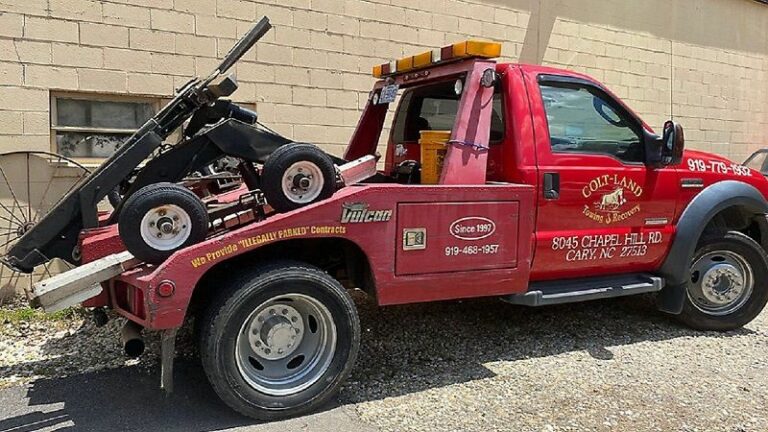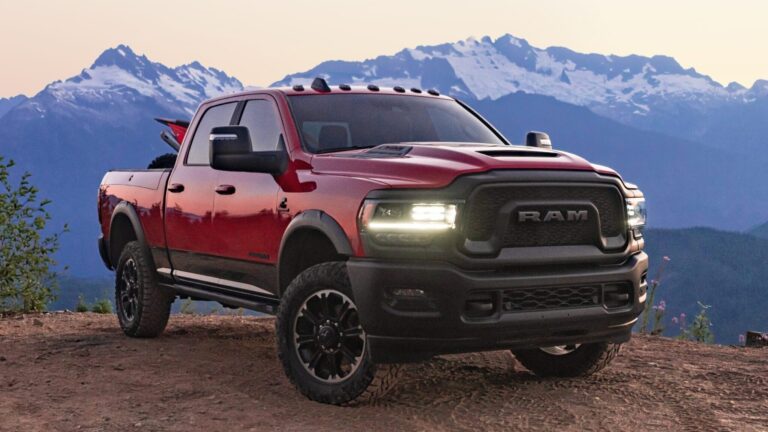Bale Truck: The Workhorse of Efficient Baling and Transport
Bale Truck: The Workhorse of Efficient Baling and Transport cars.truckstrend.com
In the vast landscapes of agriculture, where the rhythm of the seasons dictates the harvest, efficiency is paramount. From planting to harvesting, every step is optimized to maximize yield and minimize labor. One unsung hero in this intricate dance is the Bale Truck. Far more than just a standard flatbed, a bale truck is a specialized vehicle engineered to handle the unique challenges of transporting bales – predominantly hay and straw, but also increasingly, bales of recycled materials.
The importance of a dedicated bale truck cannot be overstated. It transforms a laborious, time-consuming, and often hazardous task into a streamlined operation. By providing specialized mechanisms for loading, securing, and unloading, these vehicles dramatically reduce manual labor, enhance safety, prevent bale damage, and ensure that valuable feed or recyclable commodities reach their destination efficiently. For farmers, livestock owners, and recycling facilities, a bale truck is not just a convenience; it’s a critical investment that underpins productivity and profitability.
Bale Truck: The Workhorse of Efficient Baling and Transport
This comprehensive guide will delve into the world of bale trucks, exploring their design, various types, the benefits they offer, how to operate them effectively, key considerations for purchase, and essential maintenance tips. Whether you’re a seasoned agriculturalist or new to the baling process, understanding the bale truck is key to optimizing your operations.
I. Understanding the Bale Truck: Design and Functionality
At its core, a bale truck is a heavy-duty vehicle designed or modified for the efficient transport of bales. While a standard flatbed truck can carry bales, a true bale truck incorporates specific features that differentiate it, making it uniquely suited for the task.
What makes a truck a "bale truck"?
- Specialized Bed: Typically a robust flatbed, often longer and wider than standard, designed to accommodate multiple rows and layers of bales. Some beds are slightly sloped or have side rails to aid in stability.
- Integrated Loading Mechanisms: This is where bale trucks truly shine. They often feature hydraulic systems with:
- Bale Spears/Spikes: Long, strong steel tines that pierce the bale, lifting and positioning it. Common on smaller, manually loaded setups.
- Bale Grapples/Clamps: Hydraulic arms that grasp the bale securely from the sides, ideal for larger round or square bales.
- Self-Loading Systems: Sophisticated hydraulic arms or conveyor systems that pick up bales directly from the field and load them onto the truck bed, eliminating the need for a separate loader.
- Bale Accumulators: For small square bales, some systems accumulate several bales into a larger "package" before loading them as a single unit.

- Reinforced Chassis and Suspension: Bales, especially large ones, are heavy. A bale truck requires a robust chassis and heavy-duty suspension to handle the significant weight, often unevenly distributed, across varied terrain.
- Traction and Power: Given that bale trucks often operate in fields and off-road conditions, models with four-wheel drive (4WD) or powerful engines are common to ensure adequate traction and pulling power.
Bale trucks handle various types of bales, including:

- Round Bales: Ranging from 4×4 to 6×5 feet, weighing from 800 to over 2,000 pounds.
- Small Square Bales: Typically 14x18x36 inches, weighing 40-70 pounds.
- Large Square Bales: Varying sizes, often 3x3x8 feet or 4x4x8 feet, weighing 800-1,500 pounds.
II. Types of Bale Trucks and Their Applications
The world of bale trucks offers a variety of configurations, each suited to different operational scales and budgets.
A. Manual Load Bale Trucks (Flatbed with Auxiliary Loader)
These are often standard flatbed trucks (or even semi-trailers) that are used for bale transport, but the loading is done by a separate piece of equipment, such as a tractor with a front-end loader and bale spear/grapple, or a skid steer.
- Description: A robust flatbed truck, often with stake pockets or tie-down points for securing bales. No integrated loading mechanism on the truck itself.
- Pros: Lower initial cost for the truck itself, versatility (can be used for other hauling tasks when not baling), allows for precise stacking with a skilled loader operator.
- Cons: Requires a separate loading machine and operator, more labor-intensive, slower overall process.
- Best For: Smaller farms, operations with existing loading equipment, or those with less frequent baling needs.
B. Self-Loading Bale Trucks
These are purpose-built machines or highly customized trucks that integrate the loading mechanism directly onto the vehicle, allowing a single operator to load bales without external assistance.
- Description: Features hydraulic arms, grippers, or conveyor systems that pick up bales directly from the field. Some models have automated stacking patterns.
- Pros: Highly efficient, significantly reduces labor costs, faster field-to-storage transfer, enhances safety by minimizing manual handling.
- Cons: Higher initial investment, more complex machinery requiring specialized maintenance, less versatile for other hauling tasks.
- Best For: Large-scale commercial hay operations, custom baling services, and anyone looking to maximize efficiency and minimize labor.
C. Bale Wagons/Trailers (Towed Options)
While not strictly "trucks," bale wagons and trailers are integral to bale transport and are often pulled by a bale truck or tractor. Some are self-loading and even self-unloading.
- Description: Trailed units, often with high capacities, ranging from simple flatbed trailers to sophisticated hydraulic self-loading and self-unloading wagons.
- Pros: Can be detached from the power unit, allowing the truck/tractor to be used elsewhere. Self-unloading features save significant time at the storage site.
- Cons: Requires a separate towing vehicle, can be cumbersome in tight spaces.
- Best For: High-volume operations, especially for small square bales, where efficient field clearing and barn stacking are crucial.
D. Specialized Recycling Bale Trucks
Beyond agriculture, bale trucks are also used in waste management and recycling. These trucks are designed to transport compacted bales of paper, plastic, cardboard, or metal.
- Description: Often feature specialized compaction units or large, open-top containers with integrated cranes or grapples for lifting dense, heavy recycling bales.
- Pros: Optimized for specific waste materials, robust construction to handle heavy loads.
- Cons: Highly specialized, not suitable for agricultural bales.
- Best For: Recycling centers, industrial facilities, and waste management companies.
III. Key Benefits of Utilizing a Dedicated Bale Truck
Investing in or customizing a dedicated bale truck brings a multitude of advantages that directly impact an operation’s bottom line and safety.
- Increased Efficiency and Productivity: Self-loading systems dramatically speed up the bale collection process, allowing more bales to be moved in less time. This translates to quicker field clearing, reducing exposure to weather and freeing up fields for subsequent operations.
- Reduced Labor Costs and Physical Strain: Automating the loading process minimizes the need for multiple workers and strenuous manual lifting, leading to significant savings on labor and reducing the risk of injuries.
- Enhanced Safety: Manual bale handling is inherently risky, involving heavy lifting and working around machinery. Bale trucks with integrated systems reduce human interaction with heavy bales and moving parts, creating a safer work environment.
- Optimized Load Capacity and Stability: Bale trucks are designed with specific weight distribution and securing mechanisms in mind, ensuring loads are stable and less prone to shifting during transport, even over uneven terrain. This allows for maximum payload while maintaining safety.
- Preservation of Bale Quality: Gentle and precise handling mechanisms on dedicated bale trucks reduce the risk of bale damage (tearing, crumbling) that can occur with less specialized equipment or manual handling, ensuring the quality of the feed or recyclable material.
IV. How to Operate and Load a Bale Truck Safely and Effectively
Operating a bale truck, especially a self-loading one, requires skill and adherence to safety protocols.
- Pre-Operation Checks: Before starting, perform a thorough walk-around. Check tire pressure, fluid levels (engine oil, hydraulic fluid), lights, brakes, and ensure all hydraulic hoses are free from leaks and damage. Verify that bale spears/grapples are securely attached and free from bends or cracks.
- Loading Techniques:
- Approach: Position the truck squarely with the bale, ensuring clear visibility.
- Engage: If self-loading, extend the arms/spears smoothly. For spears, aim for the center of the bale. For grapples, ensure a firm, even grip.
- Lift and Position: Lift the bale steadily and position it on the truck bed according to a pre-determined stacking pattern. Proper stacking is crucial for stability and maximizing capacity. Alternate bale directions (e.g., end-to-end, then side-by-side) to interlock them.
- Weight Distribution: Always distribute weight evenly across the truck bed, avoiding excessive weight on one side or at the very rear. This prevents instability and undue stress on the chassis.
- Securing the Load: This is non-negotiable for safety.
- Straps/Chains: Use heavy-duty ratchet straps or chains designed for cargo securement. Ensure they are rated for the weight of your load.
- Number and Placement: Use enough straps to prevent any movement. Typically, straps should go over every other bale, or every row, depending on bale size and stacking method. Cross-strapping can add extra security.
- Tightness: Straps must be taut. Re-check tightness after driving a short distance, as the load may settle.
- Nets: For small square bales, a cargo net can provide an excellent additional layer of security.
- Driving Considerations:
- Speed: Drive at a reduced speed, especially on uneven terrain, around corners, and when braking. High centers of gravity with bale loads make trucks more prone to rollovers.
- Turns: Take turns slowly and wide.
- Braking: Allow for increased braking distance due to the added weight.
- Overpasses/Low Obstacles: Be mindful of the height of your loaded truck.
- Unloading Procedures:
- Site Selection: Choose a level, clear area for unloading.
- Preparation: Remove all securing straps carefully.
- Unloading: Use the integrated system or auxiliary loader to gently remove bales, stacking them safely at the storage location.
V. Important Considerations When Purchasing or Customizing a Bale Truck
Choosing the right bale truck is a significant decision. Here’s what to consider:
- Capacity Requirements: How many bales do you need to move per trip? What are their typical sizes and weights (round, large square, small square)? This will determine the required bed size, GVWR (Gross Vehicle Weight Rating), and loader capacity.
- Terrain and Road Conditions: Will the truck operate primarily in smooth fields, rough pastures, or on public roads? This influences the need for 4WD, heavy-duty suspension, and tire type.
- Budget and Operating Costs: New self-loading trucks are a significant investment. Consider your budget, and factor in fuel consumption, maintenance, and potential repair costs. Used trucks can be cost-effective but require thorough inspection.
- New vs. Used:
- New: Offers warranties, latest technology, potentially higher resale value.
- Used: Lower upfront cost, but may have wear and tear, require immediate repairs, and lack modern features. Always get a professional inspection.
- Maintenance and Parts Availability: Choose a brand or model for which parts are readily available and service technicians are accessible in your region.
- Customization Options: Can the truck be adapted to your specific needs? Are there options for different bale spear configurations, grapple types, or additional tie-down points?
VI. Maintenance Tips for Longevity and Performance
Regular maintenance is crucial for the longevity and reliable performance of your bale truck.
- Regular Inspections: Daily pre-operation checks and weekly comprehensive inspections are vital. Look for loose bolts, worn hoses, fluid leaks, tire damage, and structural cracks.
- Hydraulic System Care: The hydraulic system is the heart of a self-loading bale truck. Check hydraulic fluid levels regularly, inspect hoses for chafing or leaks, and ensure all cylinders are clean and free from damage. Replace filters as per manufacturer recommendations.
- Tire Maintenance: Proper tire inflation is critical for carrying heavy loads safely and efficiently. Check pressure before each use and inspect for cuts, bulges, or uneven wear.
- Chassis and Bed Integrity: Bales can be abrasive and heavy. Inspect the truck bed, frame, and suspension components for rust, bends, or cracks. Address any issues promptly to prevent catastrophic failure.
- Greasing and Lubrication: Follow the manufacturer’s recommendations for greasing all moving parts, pivots, and joints on the loading mechanism. This reduces friction and extends component life.
- Cleaning: After use, especially in dusty or muddy conditions, clean the truck. This prevents dirt buildup that can hide damage and accelerate wear.
VII. Addressing Challenges and Finding Solutions
Even with the best equipment, challenges can arise. Here are common issues and their solutions:
- Challenge: Uneven Terrain / Poor Access:
- Solution: Opt for trucks with 4WD, higher ground clearance, and specialized agricultural tires. Consider track systems for extreme conditions. Plan your loading path in the field to minimize driving over rough spots.
- Challenge: Overloading / Instability:
- Solution: Adhere strictly to the truck’s GVWR and axle weight limits. Learn proper stacking techniques for optimal weight distribution. Use a scale if unsure. Never compromise on load security.
- Challenge: Mechanical Breakdown in the Field:
- Solution: Implement a rigorous preventative maintenance schedule. Carry essential spare parts (hoses, fuses, common fasteners) and basic tools. Have a plan for emergency repairs or towing.
- Challenge: Bale Damage During Transport:
- Solution: Ensure loading mechanisms handle bales gently. Secure loads tightly but without excessive pressure that could deform bales. Drive smoothly, avoiding sudden stops or turns. Inspect the truck bed for sharp edges.
- Challenge: High Fuel Consumption:
- Solution: Ensure the engine is well-maintained and tuned. Drive at efficient speeds. Optimize routing to minimize travel distances. Consider newer, more fuel-efficient models if upgrading.
VIII. Practical Advice and Actionable Insights
- Prioritize Safety First: Always put safety before speed. A few extra minutes spent securing a load or performing pre-checks can prevent serious accidents.
- Match Equipment to Scale: Don’t over-invest in a massive self-loading truck if you only handle a few hundred bales a year. Conversely, don’t try to make a small truck do a big job.
- Invest in Quality Attachments: Whether built-in or auxiliary, the bale handling attachments are critical. Choose durable, well-designed spears, grapples, or systems.
- Regular Maintenance is Non-Negotiable: It prevents costly downtime and extends the life of your valuable equipment.
- Operator Training: Ensure anyone operating the bale truck is properly trained on its specific features, safe loading, and driving techniques.
Concluding Summary
The bale truck stands as a testament to specialized engineering in the agricultural and recycling sectors. From simple flatbeds augmented with external loaders to advanced self-loading behemoths, these vehicles are indispensable for efficiently moving the often bulky and heavy loads of bales. They represent a significant leap in productivity, labor reduction, and safety, transforming what was once a grueling task into a streamlined process. By understanding the different types, their benefits, proper operation, and critical maintenance, operators and owners can make informed decisions that maximize their investment, ensuring that bales are transported safely, efficiently, and with minimal loss, contributing significantly to the success of their operations.
Price Table: Estimated Bale Truck Costs (Highly Variable)
Please note: Prices for bale trucks vary immensely based on new vs. used, make, model, capacity, features, engine size, condition, and regional market fluctuations. This table provides broad estimates for illustrative purposes only. Always obtain specific quotes from dealers or sellers.
| Bale Truck Type / Configuration | Capacity (Approx. Bales) | Estimated Price Range (USD) | Key Features / Notes |
|---|---|---|---|
| Used Flatbed Truck | 10-30 (small/round) | $10,000 – $35,000 | Standard commercial flatbed (e.g., Ford F-Series, Ram, Chevrolet, Isuzu), requires external loader (tractor, skid steer). Good for general hauling too. Price depends heavily on mileage, age, and condition. |
| New Flatbed Truck (Chassis Only) | N/A (for custom upfit) | $40,000 – $80,000+ | Base chassis for custom bale bed fabrication or attachment of self-loading system. No bale handling features included. |
| Custom Converted Bale Truck (Used Base) | 30-60 (mixed sizes) | $30,000 – $70,000 | Used truck chassis with custom-built long flatbed, often with headache rack, stake pockets, and reinforced frame. May include simple manual bale spears or attachments for auxiliary loaders. Labor for conversion adds to cost. |
| Small Self-Loading Bale Truck | 20-40 (round/large square) | $75,000 – $150,000+ | Entry-level dedicated self-loading unit, typically for medium-sized operations. Integrated hydraulic arm/grapple. May be mounted on a new or used chassis. |
| Large Commercial Self-Loading Bale Truck | 40-80+ (round/large square) | $150,000 – $350,000+ | High-capacity, purpose-built or heavily customized unit for large-scale commercial operations. Advanced hydraulics, robust construction, often with automated stacking features. New models can exceed $400k depending on features. |
| Self-Loading Bale Wagon/Trailer | 30-100+ (small/round) | $25,000 – $100,000+ | Towed unit, not a self-propelled truck. Often used with a tractor or truck for transport. Ranges from basic hydraulic self-loaders to advanced self-unloading accumulator wagons. Price varies by capacity and automation level. |
| Specialized Recycling Bale Truck | Varies by material | $100,000 – $500,000+ | Highly specialized vehicles with specific compaction or lifting mechanisms for industrial waste bales. Prices are significantly higher due to complexity and specific industrial requirements. |
Frequently Asked Questions (FAQ) about Bale Trucks
Q1: What’s the main difference between a bale truck and a regular flatbed truck?
A1: While a regular flatbed can carry bales, a dedicated bale truck is specifically designed or modified for bale transport. The key difference lies in specialized features like an extended, reinforced bed, and crucially, integrated hydraulic loading mechanisms (bale spears, grapples, or self-loading arms) that allow for efficient and often automated loading and unloading, reducing manual labor and increasing safety.
Q2: Can I convert my existing truck into a bale truck?
A2: Yes, it’s possible to convert an existing heavy-duty flatbed truck into a more efficient bale hauler. This often involves extending and reinforcing the bed, adding a headache rack, and installing mounting points for auxiliary bale spears or a small crane. However, installing a full self-loading hydraulic system is a complex and expensive modification that often requires professional engineering and fabrication. Ensure the truck’s chassis and engine can handle the added weight and demands.
Q3: Are self-loading bale trucks worth the investment?
A3: For large-scale agricultural operations or custom baling services, absolutely. Self-loading bale trucks dramatically increase efficiency, reduce labor costs (often eliminating the need for a separate loader and operator), and enhance safety. While the initial investment is higher, the long-term savings in time, labor, and reduced bale damage often justify the cost. For smaller operations, a manual loading system might be more cost-effective.
Q4: How do I secure bales on a truck to prevent them from shifting?
A4: Proper load securement is critical for safety. Use heavy-duty ratchet straps or chains specifically rated for cargo transport. Position straps over every row or every other bale, depending on size and stacking. Ensure straps are taut and re-check their tightness after driving a short distance as the load settles. Stacking bales in an interlocking pattern also enhances stability. For small square bales, a cargo net can provide additional security.
Q5: What safety precautions should I take when operating a bale truck?
A5: Always perform pre-operation checks (tires, fluids, hydraulics). Maintain a clear line of sight during loading and driving. Drive at reduced speeds, especially with a full load, and be extra cautious on turns and uneven terrain due to the high center of gravity. Never exceed the truck’s weight limits. Ensure all personnel are clear of moving parts during loading and unloading. Wear appropriate personal protective equipment (PPE).
Q6: How often should I perform maintenance on my bale truck?
A6: Daily pre-operation checks are recommended. More comprehensive inspections should be done weekly or before each major use. Follow the manufacturer’s schedule for fluid changes (engine oil, hydraulic fluid), filter replacements, and lubrication of moving parts. Regular maintenance prevents breakdowns, extends the life of the vehicle, and ensures safe operation.







